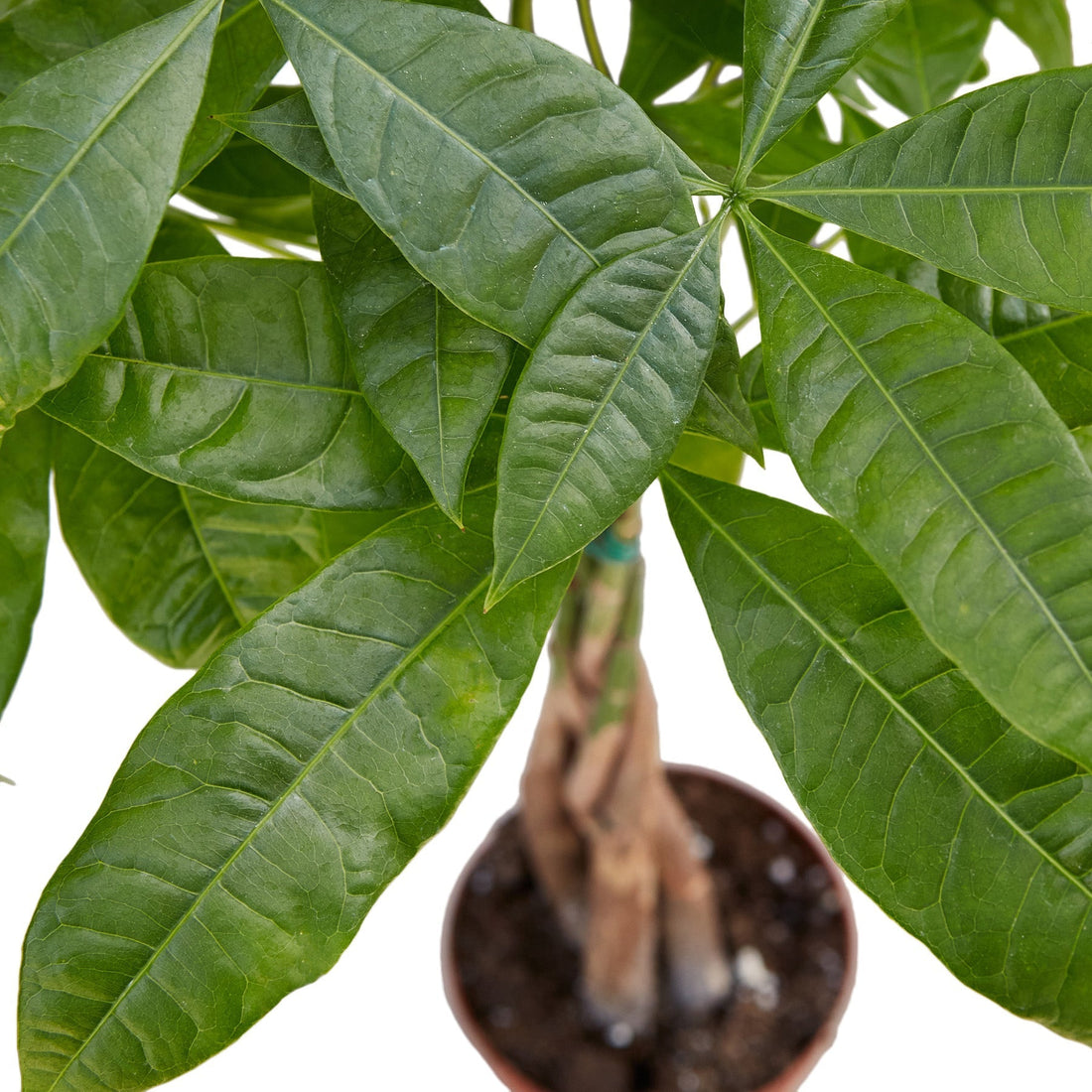
Ultimate Care Guide for Money Tree 'Guiana Chestnut' (Pachira Braid)
Share
The Money Tree, also known as Pachira aquatica or Guiana Chestnut, is a popular houseplant known for its braided trunk and lush green leaves. It’s a favorite among both novice and experienced gardeners due to its low maintenance and attractive appearance. This guide will cover everything you need to know about caring for your Money Tree to ensure it thrives in your home.
Table of Contents
- Introduction
- Background of the Money Tree
- Light Requirements
- Watering
- Humidity and Temperature
- Soil and Potting
- Fertilization
- Pruning and Maintenance
- Common Problems and Solutions
- Frequently Asked Questions
- Conclusion
Introduction
The Money Tree is often associated with good luck and prosperity, making it a common gift and a cherished addition to many homes and offices. Known for its ability to adapt to various indoor environments, the Money Tree can grow up to 60 feet in the wild but typically stays much smaller when grown indoors.
Background of the Money Tree
The Money Tree, or Pachira aquatica, is native to the wetlands of Central and South America. It gained popularity as a houseplant in East Asia before becoming widespread in the Western world. The plant is often braided while young, creating an eye-catching and distinctive appearance.
Light Requirements
Optimal Light Conditions
Money Trees thrive in bright, indirect light. Direct sunlight can scorch the leaves, while too little light can cause slow growth and yellowing leaves. Place your Money Tree near a window where it can receive filtered light throughout the day.
Adaptability
This plant can adapt to lower light conditions, but it’s essential to ensure it receives enough light to stay healthy. If natural light is insufficient, consider using grow lights to supplement.
Watering
Frequency
Water your Money Tree thoroughly but infrequently. Allow the top 1-2 inches of soil to dry out between waterings. Overwatering is one of the most common issues, leading to root rot.
Method
Ensure the pot has drainage holes to prevent water from accumulating at the bottom. When watering, drench the soil until water runs out of the drainage holes, then let it dry out before watering again.
Humidity and Temperature
Humidity
Money Trees prefer high humidity levels. If your home has dry air, especially in winter, consider using a humidifier or placing a tray of water near the plant to increase humidity.
Temperature
Maintain a temperature range between 65°F and 75°F (18°C - 24°C). Avoid placing the plant near cold drafts, heating vents, or air conditioners, as sudden temperature changes can stress the plant.
Soil and Potting
Soil Type
Use a well-draining potting mix, such as a blend of peat moss, perlite, and sand. This type of soil ensures proper aeration and prevents waterlogging.
Repotting
Repot your Money Tree every 2-3 years or when it outgrows its current pot. Choose a pot that is 1-2 inches larger in diameter than the previous one to allow room for growth.
Fertilization
Frequency
Feed your Money Tree with a balanced, water-soluble fertilizer once a month during the growing season (spring and summer). Reduce fertilization during fall and winter when the plant’s growth slows down.
Application
Dilute the fertilizer to half the recommended strength to avoid over-fertilizing, which can lead to salt buildup in the soil.
Pruning and Maintenance
Pruning
Regular pruning helps maintain the shape and health of your Money Tree. Trim off any yellow or dead leaves and prune back leggy growth to encourage a fuller, bushier appearance.
Maintenance
Wipe the leaves with a damp cloth to remove dust and keep them looking vibrant. This also helps the plant to photosynthesize more effectively.
Common Problems and Solutions
Yellowing Leaves
Cause: Overwatering or poor drainage. Solution: Check the soil moisture and ensure the pot has adequate drainage. Adjust your watering schedule accordingly.
Leaf Drop
Cause: Sudden changes in environment or stress. Solution: Ensure consistent care and avoid drastic changes in light, temperature, or humidity.
Pests
Common Pests: Spider mites, mealybugs, and aphids. Solution: Treat infestations with insecticidal soap or neem oil. Regularly inspect your plant to catch problems early.
Frequently Asked Questions
How often should I water my Money Tree?
Water your Money Tree when the top 1-2 inches of soil are dry. Typically, this means watering every 1-2 weeks, but it can vary depending on the humidity and temperature of your home.
Can I grow my Money Tree outdoors?
Money Trees can be grown outdoors in USDA zones 10-12. They prefer a humid, tropical environment and should be protected from direct sunlight and strong winds.
Why are the leaves on my Money Tree turning brown?
Brown leaves can be a sign of underwatering, low humidity, or exposure to direct sunlight. Adjust your care routine accordingly to address the issue.
Conclusion
Caring for a Money Tree is relatively straightforward, making it an excellent choice for both beginners and seasoned plant enthusiasts. By providing the right balance of light, water, humidity, and occasional feeding, your Money Tree will thrive and bring a touch of nature and good fortune to your home.
Remember, each Money Tree is unique, and it may take some time to understand its specific needs. With patience and attention, you’ll be rewarded with a lush, healthy plant that enhances your living space.
For more plant care tips and gardening guides, visit Garden Wrld. Don't forget to share your Money Tree success stories with us on social media!

